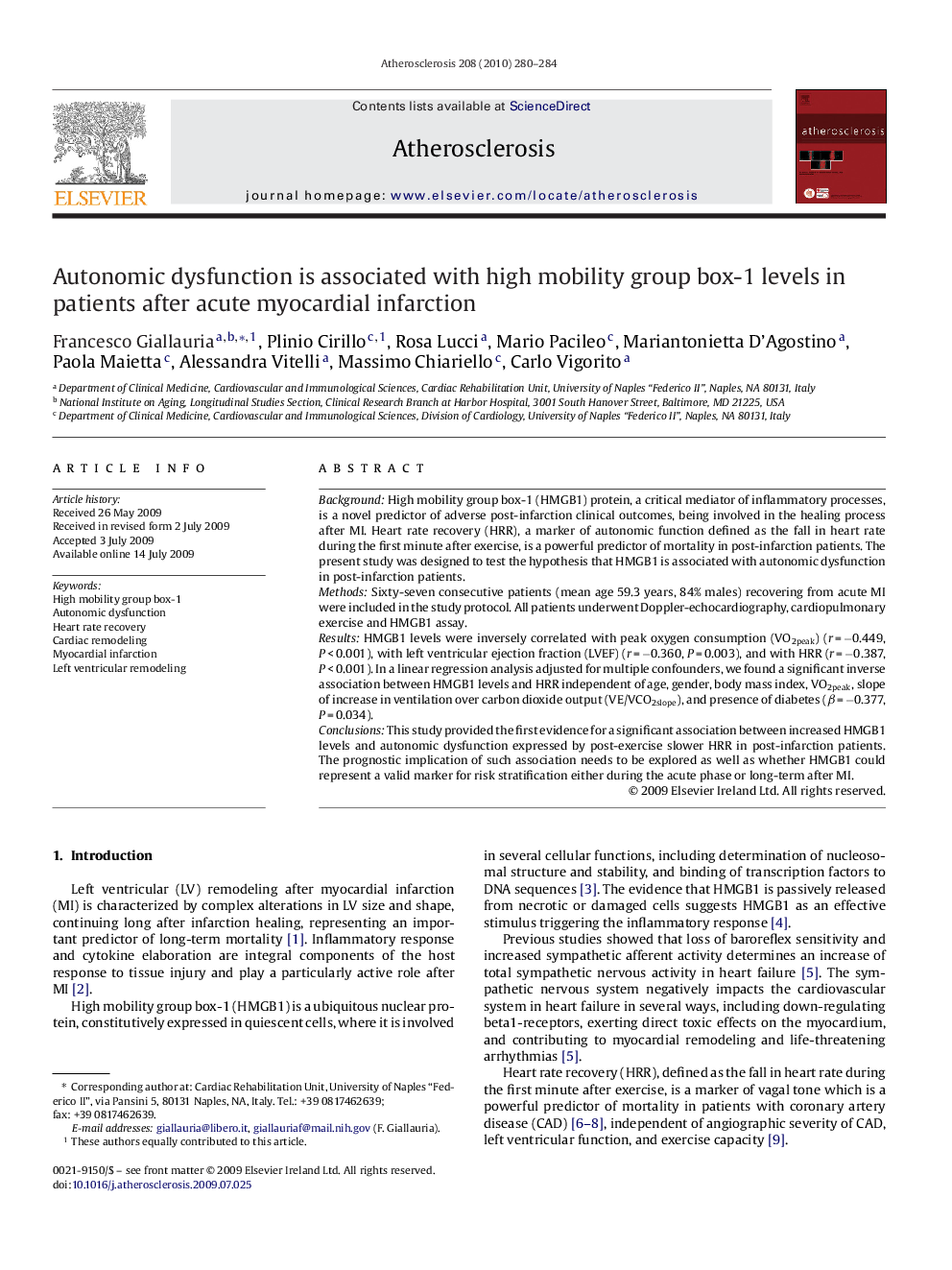| Article ID | Journal | Published Year | Pages | File Type |
|---|---|---|---|---|
| 2893696 | Atherosclerosis | 2010 | 5 Pages |
BackgroundHigh mobility group box-1 (HMGB1) protein, a critical mediator of inflammatory processes, is a novel predictor of adverse post-infarction clinical outcomes, being involved in the healing process after MI. Heart rate recovery (HRR), a marker of autonomic function defined as the fall in heart rate during the first minute after exercise, is a powerful predictor of mortality in post-infarction patients. The present study was designed to test the hypothesis that HMGB1 is associated with autonomic dysfunction in post-infarction patients.MethodsSixty-seven consecutive patients (mean age 59.3 years, 84% males) recovering from acute MI were included in the study protocol. All patients underwent Doppler-echocardiography, cardiopulmonary exercise and HMGB1 assay.ResultsHMGB1 levels were inversely correlated with peak oxygen consumption (VO2peak) (r = −0.449, P < 0.001), with left ventricular ejection fraction (LVEF) (r = −0.360, P = 0.003), and with HRR (r = −0.387, P < 0.001). In a linear regression analysis adjusted for multiple confounders, we found a significant inverse association between HMGB1 levels and HRR independent of age, gender, body mass index, VO2peak, slope of increase in ventilation over carbon dioxide output (VE/VCO2slope), and presence of diabetes (β = −0.377, P = 0.034).ConclusionsThis study provided the first evidence for a significant association between increased HMGB1 levels and autonomic dysfunction expressed by post-exercise slower HRR in post-infarction patients. The prognostic implication of such association needs to be explored as well as whether HMGB1 could represent a valid marker for risk stratification either during the acute phase or long-term after MI.
